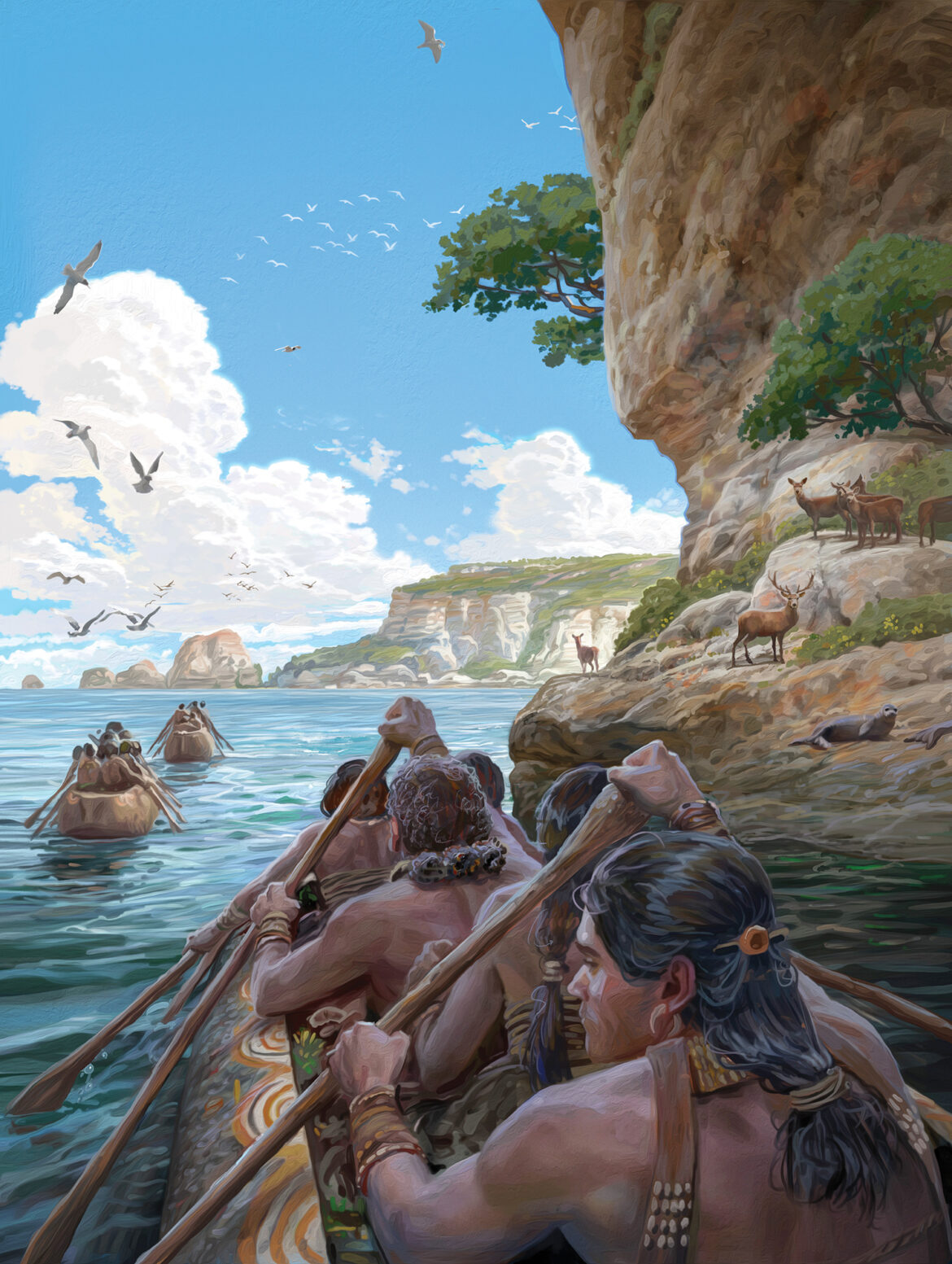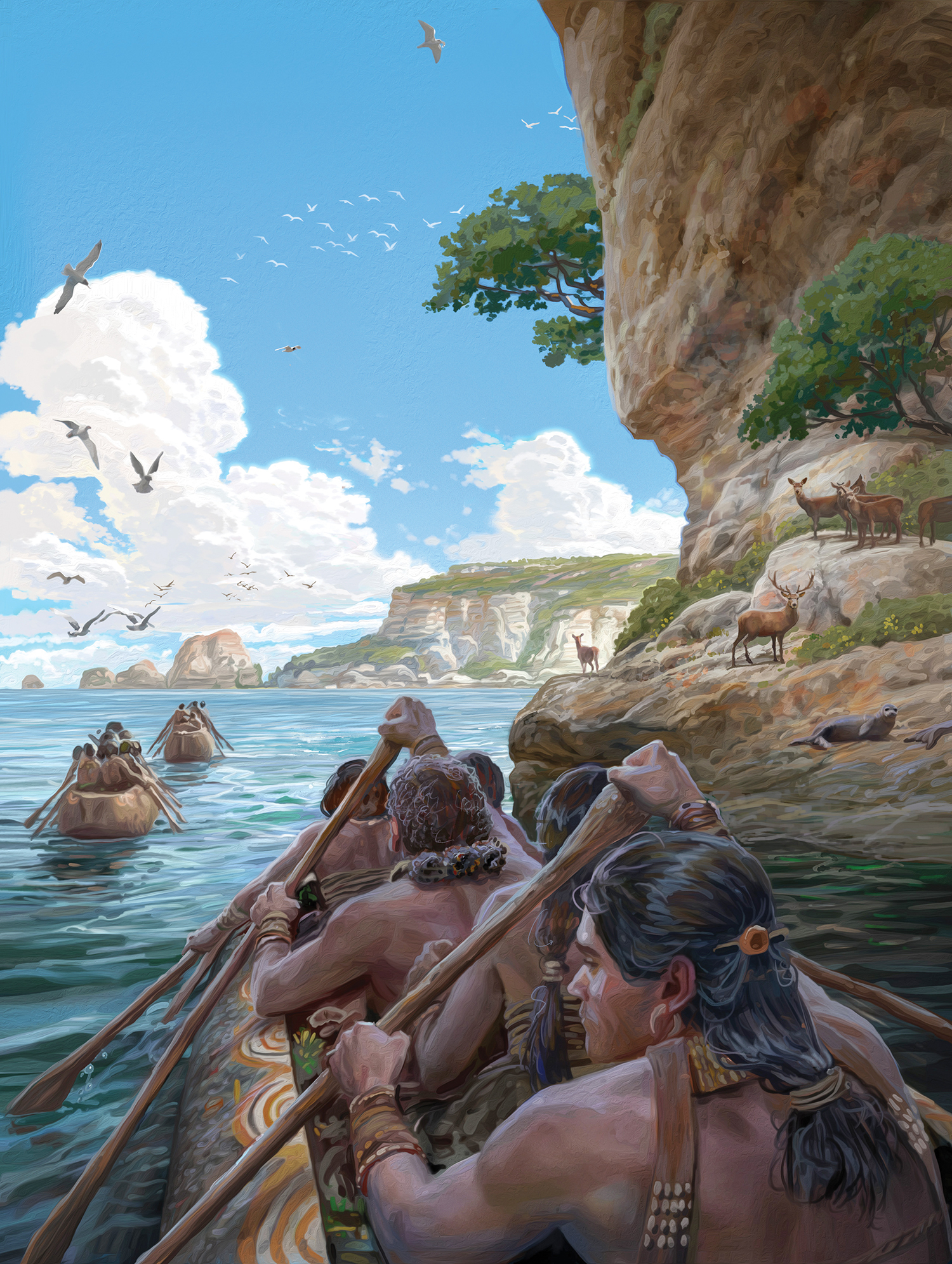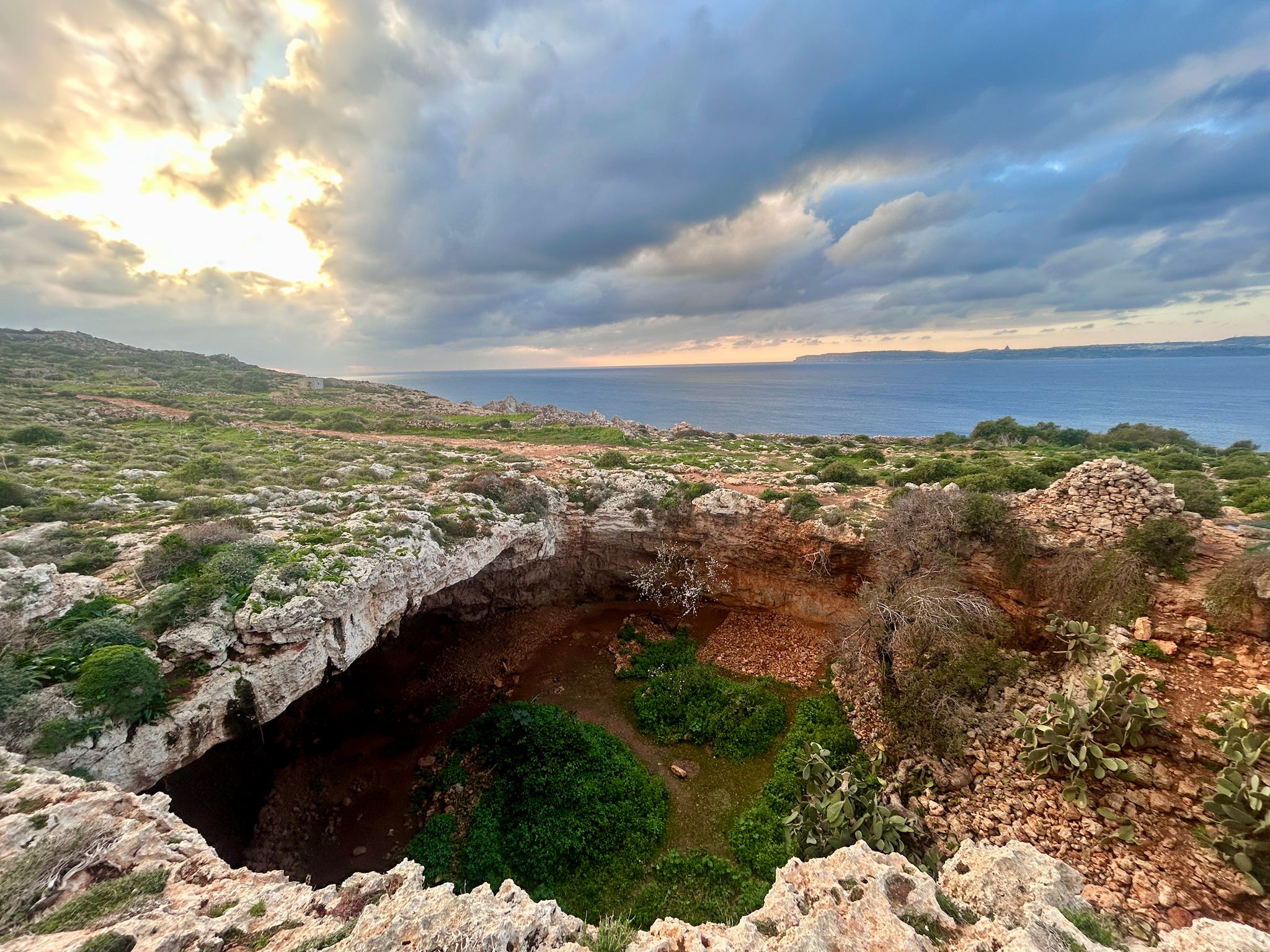

Scerri-Mesolithic_Credit-Daniel Clarke_Lrg
Human presence in Malta earlier than previously thought
Around 7500 years ago, the first farmers arrived on Malta. They were part of the general expansion of agriculture that had finally reached the Central Mediterranean, a few thousand years after its initial development in the Middle East. This wave of advance carried with it new people, new ideas, and new technologies that would ultimately transform human life.
However, the so-called “Neolithic spread” did not find a Europe devoid of people. For millennia, Europe had been inhabited by hunter-gatherers, descendants of the first groups of humans to leave their African homelands some 50 thousand years previously. During this almost unimaginably long stretch of time, these hunter-gatherers had met the last Neanderthals, developed intricate art, complex systems of belief, transformed their ecosystems, innovated seafaring, and peopled most of the earth. They had also survived the ravages of the last Ice Age. Yet this deeper human prehistory was never part of Malta’s story: Europe’s last hunter-gatherers were seen as unwilling or unable to get to small and remote islands. This is because hunter-gatherers usually need to exploit large areas to hunt and gather wild foods without depleting resources. Navigating very long sea-distances was therefore either beyond their capabilities, or not worth the attempt. As a result, the first farmers to arrive in Malta were assumed to have been met with a landscape untouched by humans, if devoid of the strange animals like pygmy hippos that had characterized previous time periods.
After decades of consensus, the theory that hunter-gatherers did not reach the small and remote islands of the Mediterranean has been disproved in a paper published in Nature this week. New discoveries on Malta show that hunter-gatherers were living on Malta at least a thousand years before the first farmers ever arrived. Latnija Cave, in Mellieħa, has yielded unprecedented archaeological discoveries that have extended the Maltese story by a full millennium. The new discoveries were made as part of a project led by Professor Eleanor Scerri of the Max Planck Institute of Geoanthropology in Germany, and the Department of Classics and Archaeology at the University of Malta, and Professor Nicholas Vella of the Department of Classics and Archaeology at the University of Malta. Using state-of-the-art methods in archaeological science, the project painstakingly excavated the site over five years and in unprecedented detail. The study revealed that humans were living in Malta from at least 8500 years ago and subsisting on a diet of wild food, including birds, fish, marine mammals, and local species of tortoises and red deer. They left behind thick hearths and beds of ash containing the remains of their cooked food and stone tools.
“We found thousands of animal bones, many of them burned,” explained Prof. Scerri, “These animals were really diverse, and included cooked edible sea snails, sea urchins, fish, seals, red deer, tortoises, and a vast array of birds. These diets are typical of other Mesolithic hunter-gatherers living, for example, on coastal Sicily, but very different to the diets of the
farmers who came later.”
These hunter-gatherers seem to have been able to survive on Malta, which at 8500 years ago was almost the same size as it is today. “Malta, Gozo and Comino were just about still connected,” says Prof. Scerri, “so the size of Malta was not then dramatically larger than it is today. However, because these hunter-gatherers were so adept at exploiting resources from the air and the sea, they were able to overcome these land size limitations.”
The hunter-gatherers used local limestone to make stone tools. “Many of their tools were made from cobbles collected from the nearby shoreline,” explained Dr Huw Groucutt, a stone tool expert from the Department of Classics and Archaeology and a researcher on the study, “they used these raw materials to make simple sharp flakes and for hunting and processing activities.”

Latnija Cave. Photo Credit: A. Curras.

The Team excavating at Latnija Cave. Photo credit: H. Groucutt.
Their presence on Malta also meant that the first farmers encountered a landscape already impacted by humans.
“It seems certain that not all the animals we associate with Għar Dalam cave had gone extinct by the time the Mesolithic hunter-gatherers arrived,” explained Dr Mario Mata-González, a zooarchaeologist at the Department of Classics and Archaeology, who also participated in the study. “Foxes, Red Deer, and tortoises at least were all still around. It’s unclear how many were left a thousand years later when the first farmers arrived, but it seems that at least some of Malta’s endemic deer species had not yet been entirely wiped out.”
These discoveries prompt further questions regarding the origin of these hunter-gatherers, which the researchers feel is most likely Sicily, the closest land mass.
“Sicily is very close to mainland Italy,” explains Prof. Vella, “and hunter-gatherers had been living on this large and resource-rich island from at least 16 thousand years ago. However, they would have had to have crossed at least a 100 km stretch of open water to get to Malta. In a dug-out canoe, this is an unimaginable feat.”
Currents and wind directions prevent straight-line travel, and the requirement to paddle in darkness all imply a deep knowledge of navigation, the stars, and the use of sea marks. At sea level, Malta and Sicily are not mutually visible. “Optimistically, this crossing would have
taken place at a speed of 2-3 km per hour,” said Prof. Vella, “and would have required periods of rest. A 100 km crossing would therefore require several hours of darkness even during the longest day of the year. If hunter-gatherers were capable of doing this, what else were they capable of?”
The researchers say their results imply the existence of connections across the Mesolithic Mediterranean that may even have facilitated the spread of farming in the following centuries. “Long-distance travel by sea may explain the mysterious collapse of many endemic animals seen on different Mediterranean islands,” said Prof. Scerri, “by considering the
actions of humans in this context we may learn something entirely new about ecosystem changes and Mediterranean biogeography during this period.”
“Recent studies have found the presence of European hunter-gatherer ancestry in the DNA of some of the earliest farmers in North Africa,” said Prof. Vella. “Until now, this presence was currently unexplained, but crossings facilitated by Malta may now give it context. If so, Malta was at the centre of a hitherto unknown web of ancient connections that we are only just starting to understand. Malta’s place in later Neolithic prehistory is of a very insular nature, and not always connected to outside world. The opposite may be true in the Mesolithic.”
“Our discovery connects Malta with a much deeper human prehistory,” added Prof. Scerri, “it roots Malta to the story of humanity itself.”
The research was funded by the European Research Council, and a Research Excellence Award from the University of Malta.
RIDT is proud to be supporting the “Island Legacies” Conference which will be held at the Valletta Campus 03-06 June 2025
